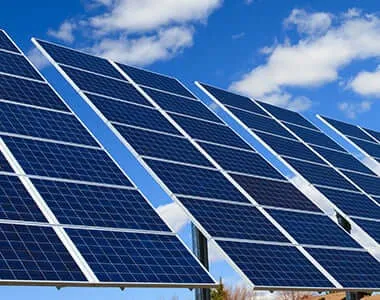Understanding the Dimensions of a 10kW Solar Panel System for Your Home
Understanding the Size of a 10 kW Solar Panel System
As the global demand for renewable energy continues to rise, solar power has become an increasingly popular choice for both residential and commercial energy needs. One of the key considerations when installing a solar power system is its size, particularly when dealing with a 10 kW solar panel system. This article will explore the size of a 10 kW solar panel system, its components, and how to determine the space requirement for installation.
What is a 10 kW Solar Panel System?
A 10 kW solar panel system is designed to produce approximately 10 kilowatts of power under ideal conditions, which can significantly reduce electric bills and contribute to environmental sustainability. Typically, this size system would be suitable for larger homes or small businesses that consume substantial amounts of electricity.
Components of a 10 kW Solar Panel System
A 10 kW solar system comprises several essential components, including solar panels, inverters, racking systems, and wiring. The most significant portion of the system is the solar panels themselves. Solar panels convert sunlight into electricity using photovoltaic cells.
The number of solar panels needed for a 10 kW system depends on the wattage of the panels chosen. For instance, if you opt for 300-watt panels, you will need approximately 34 panels (10,000 watts ÷ 300 watts per panel = 33.3 panels). Similarly, if you choose 400-watt panels, only 25 panels would be required (10,000 watts ÷ 400 watts per panel = 25 panels).
Size of Solar Panels
The standard solar panel size varies by manufacturer, but most panels range from 1.6 square meters (17.2 square feet) for a 300-watt panel to about 1.9 square meters (20.5 square feet) for a 400-watt panel. To estimate the total area needed for installation, we multiply the area of a single panel by the number of panels.
10kw solar panel size

Using 300-watt panels as an example, the total area required would be approximately
\[ 34 \text{ panels} \times 1.6 \text{ m}^2 \approx 54.4 \text{ m}^2 \] (approximately 585 square feet).
If using 400-watt panels, the calculation would be
\[ 25 \text{ panels} \times 1.9 \text{ m}^2 \approx 47.5 \text{ m}^2 \] (approximately 511 square feet).
Space Requirement Considerations
When determining the space required for a 10 kW solar panel installation, it’s essential to consider not only the area for the panels but also the additional space needed for the racking system, inverters, and maintenance access. Various factors can influence the actual space needed, including the roof type, tilt angle, shading from nearby structures, and local building codes.
Most residential roofs can accommodate a 10 kW system, but in scenarios where rooftops are insufficient, ground-mounted systems can be a viable alternative. These installations often require more space than rooftop systems but can offer greater flexibility in terms of orientation and tilt.
Conclusion
A 10 kW solar panel system is an excellent investment for those looking to harness solar energy. Understanding the size of the solar panels, the total area required for the installation, and the space considerations involved will help homeowners and businesses make informed decisions when transitioning to solar power. As technology continues to advance and prices decrease, the feasibility and benefits of solar energy become even more attractive, making it a sustainable solution for the future.
-
Unlocking Energy Freedom with the Off Grid Solar InverterNewsJun.06,2025
-
Unlock More Solar Power with a High-Efficiency Bifacial Solar PanelNewsJun.06,2025
-
Power Your Future with High-Efficiency Monocrystalline Solar PanelsNewsJun.06,2025
-
Next-Gen Solar Power Starts with Micro Solar InvertersNewsJun.06,2025
-
Harnessing Peak Efficiency with the On Grid Solar InverterNewsJun.06,2025
-
Discover Unmatched Efficiency with the Latest String Solar InverterNewsJun.06,2025







